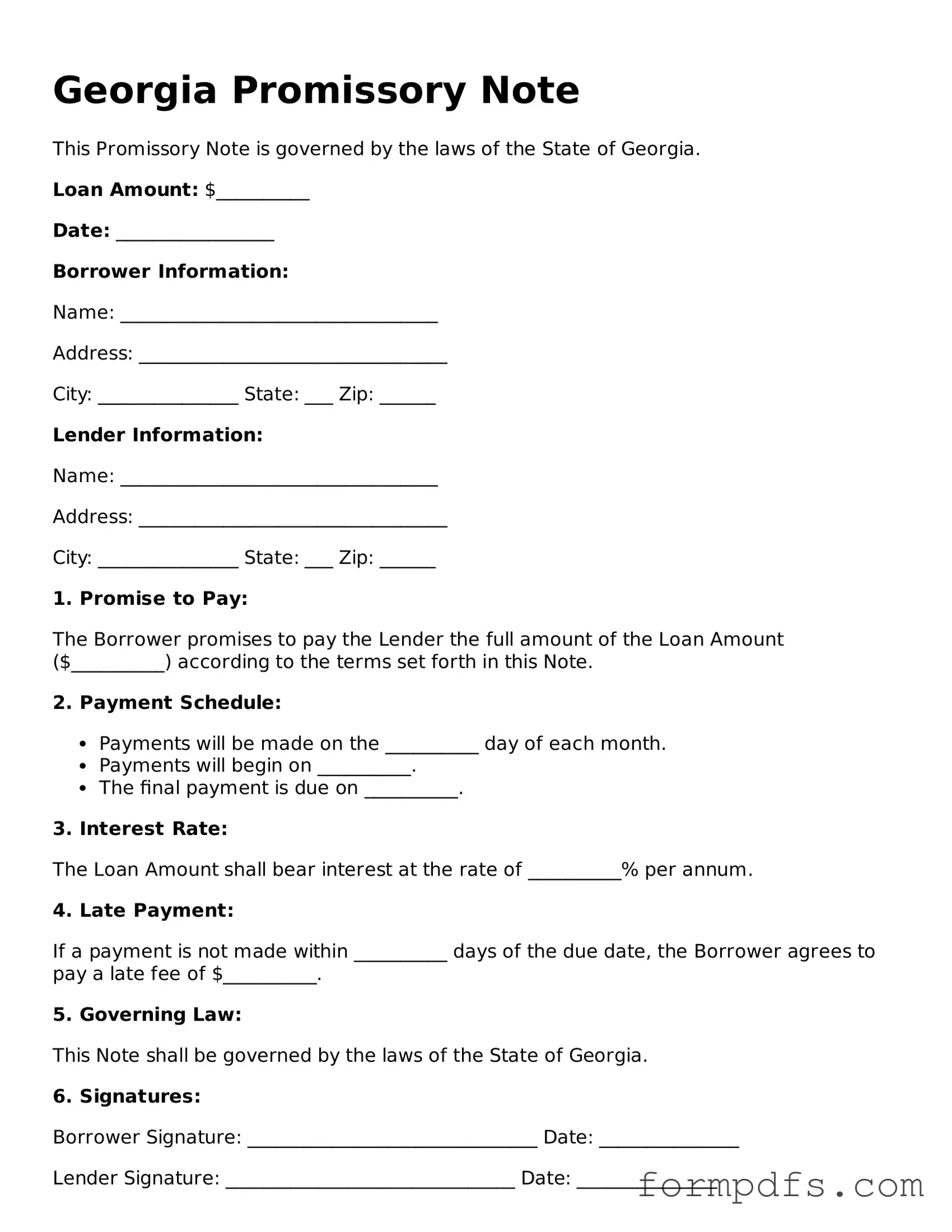What is a Georgia Promissory Note?
A Georgia Promissory Note is a legal document in which one party promises to pay a specific amount of money to another party at a defined time or on demand. It serves as a written record of the loan agreement and includes details such as the loan amount, interest rate, payment schedule, and any consequences for defaulting on the loan.
Who can use a Promissory Note in Georgia?
Any individual or business can use a Promissory Note in Georgia. This includes lenders, such as banks or private individuals, and borrowers, who may be individuals or businesses needing to secure a loan. It is important for both parties to understand the terms outlined in the note.
What information should be included in a Georgia Promissory Note?
A Georgia Promissory Note should include the following key elements: the names of the borrower and lender, the principal amount of the loan, the interest rate, the payment schedule, the due date, and any terms regarding default or late payments. It may also include provisions for prepayment and governing law.
Is a Georgia Promissory Note legally binding?
Yes, a properly executed Georgia Promissory Note is legally binding. Once both parties sign the document, they are obligated to adhere to the terms outlined in the note. If one party fails to meet their obligations, the other party may have legal grounds to pursue collection actions.
Do I need a lawyer to create a Promissory Note in Georgia?
While it is not required to have a lawyer draft a Promissory Note, consulting one can be beneficial. A lawyer can help ensure that the document meets legal requirements and adequately protects your interests. This is particularly important for larger loans or complex agreements.
Can a Promissory Note be modified after it is signed?
Yes, a Promissory Note can be modified after it is signed, but both parties must agree to the changes. Any modifications should be documented in writing and signed by both parties to avoid future disputes. Verbal agreements are generally not enforceable in this context.
What happens if the borrower defaults on the Promissory Note?
If the borrower defaults, the lender has several options. They may seek to collect the debt through negotiation or mediation. If these efforts fail, the lender can file a lawsuit to recover the owed amount. The terms of the Promissory Note will dictate the specific consequences of default, including any fees or interest that may apply.
Can a Promissory Note be secured or unsecured?
A Promissory Note can be either secured or unsecured. A secured note is backed by collateral, such as property or assets, which the lender can claim if the borrower defaults. An unsecured note does not have collateral backing it, making it riskier for the lender. The choice between secured and unsecured depends on the agreement between the parties involved.
Where can I find a template for a Georgia Promissory Note?
Templates for Georgia Promissory Notes can be found online through legal websites, document preparation services, or by consulting with a lawyer. It is essential to ensure that any template used complies with Georgia state laws and meets the specific needs of the parties involved.
